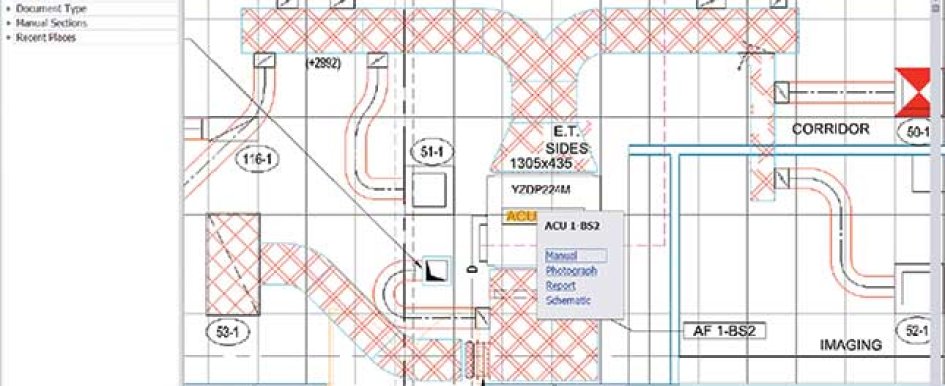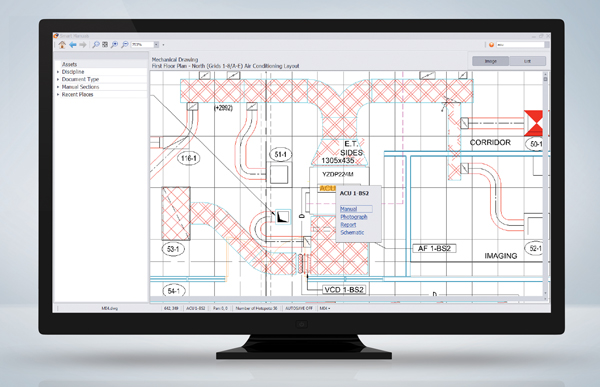
General contractors struggle with the compilation and delivery of operation and maintenance (O&M) manuals to asset owners at project completion. Contributing factors might include a missed closeout or handover deadlines, incomplete handover documentation or the inability to collect final payment on time. In the worst cases, disputes arise, claims are filed and reputations are damaged. Additional challenges contractors face can include:
- Creating a project-wide view of what information is required, what has already been captured and what still needs to be collected
- Loss of contact with subcontractors that may have completed their work on a project years earlier
- Ensuring that the right information is delivered to the right people for review and approval
- Knowing exactly what information is required for each project, then identifying what is missing and who needs to provide it
- Producing O&M manuals that meet contractual, compliance and other obligations
 Construction project information management software is key to
delivering high-quality, digital O&M manuals on time.
Construction project information management software is key to
delivering high-quality, digital O&M manuals on time.To meet these challenges, contractors should implement the following set of processes based on the premise that assets are built to be operated, and the quality of the final result—profitable facility management over decades—should drive project management and handover.
Before Construction
A common cause of botched handover is that contractors wait until practical completion before starting the assembly of O&M manuals. Unfortunately, the rush of execution often makes closeout a costly afterthought. For your next project, consider taking these proactive measures before construction begins:
- Implement a project information management (PIM) system built specifically for construction projects between different organizations.
- Before the project begins, clarify the requirements of your O&M manuals, using contract specifications or best practices from prior projects.
- Use an automated bidding and tendering process that specifies information for building assets and is integrated with your PIM system.
- Apply the asset information specified in the bid documents as project-wide protocols so that the document metadata in your system is specific to the project and entered only once.
- Create digital placeholders for uploading O&M manuals to your system, with documents submitted by the winning bidders.
- Assign these placeholders to the winning bidders for each trade discipline.
- Have each subcontractor upload the final O&M documents as they are completed to the digital placeholders for review and approval.
- Track and report on progress as the manuals come together.
By following this process, you should be able to complete up to 50 percent of your manuals before the actual construction process begins.
Technology Reduces Time and Cost
In a survey of infrastructure project executives, 69 percent said that the time required to review and assemble O&M information accounted for the single highest cost of handover.
Manuals include thousands of pieces of documentation that need to be reviewed and approved before delivery. The sheer volume can be complicated by additional scrutiny required for compliance and commissioning information—even more reason to start early and keep pace with the project as it proceeds.
In regard to assembly of the documentation and delivery to the owner, massive three-ring binders, CDs or USB drives containing thousands of files are the norm. If you put yourself in the shoes of the owner’s facility management team, how easy are those to search and use? How are they different from what your competitors are handing over? Are they safe from natural disasters like fires and floods? Consider this approach:
- Use your PIM system to engage your client early in the O&M process and demonstrate your commitment to supporting effective asset information management.
- As each document is collected, make it easy to find, access and use, with metadata specific to your project.
- Generate digital manuals for secure storage and access, optionally on a software-as-a-service (SaaS) platform such as the cloud.
Why the Cloud?
SaaS is becoming a mainstream construction technology, as architects, contractors, developers, owners and project managers migrate to the cloud from legacy systems requiring ongoing investments in software, hardware, operations and support.
For your clients, the cloud protects irreplaceable project and asset information from the effects of unforeseen events. Fires, floods and human error can damage binders and physical storage media, but they can’t reach the cloud. In addition to their economic benefits, SaaS solutions offer fast, flexible deployment and secure, neutral access across multiple independent organizations. Backup systems in different geographic locations provide an extra measure of data security for disaster recovery and other unexpected situations.
SaaS solutions also support mobility so that your clients can access their project and asset data on tablets and smartphones while away from the office. Mobile access to intelligent, dynamic O&M manuals stored securely in the cloud can further differentiate you from competitive contractors who don’t offer these advantages.
What About BIM?
For BIM projects, compiling and organizing project information required for O&M should begin with the building information models created during the design phase. This information should then be managed collaboratively through the construction phase.
You can do this with a construction-specific PIM system that supports BIM processes. While the design teams create, coordinate and federate their respective models, the other project stakeholders can review, comment on and use them to move the project forward. This ensures that the as-built asset reflects all details of the final design and is accurately documented in the O&M manuals.
BIM files that support efficient O&M should be much more than 3-D graphics. These files should include all project and materials information associated with the objects in the models—the building’s structural, mechanical, electrical, plumbing and other functional assets—and the spaces between the objects.
Owners and their facilities management (FM) teams should then be able to graphically navigate the models and search with metadata to find the current documentation on any building asset—with its complete project history— without having to purchase expensive software licenses. Non-BIM projects can be done with 2-D shop drawings.
Three Points to Remember
Timely, accurate O&M handover is critical to your margins and competitiveness. Following these three steps can determine when you receive final payment and distinguish you from other contractors:
- Adopt a construction-specific PIM system—SaaS-based and mobile—that supports all project participants equally.
- Ensure that your system can seamlessly deliver high-quality, digital O&M manuals on time, without you having to chase subcontractors, double-handle information or do rework.
- Have your project team produce O&M manuals progressively from day one.
These steps can help you save up to 80 percent of the time that it currently takes you to deliver O&M manuals to your clients.
